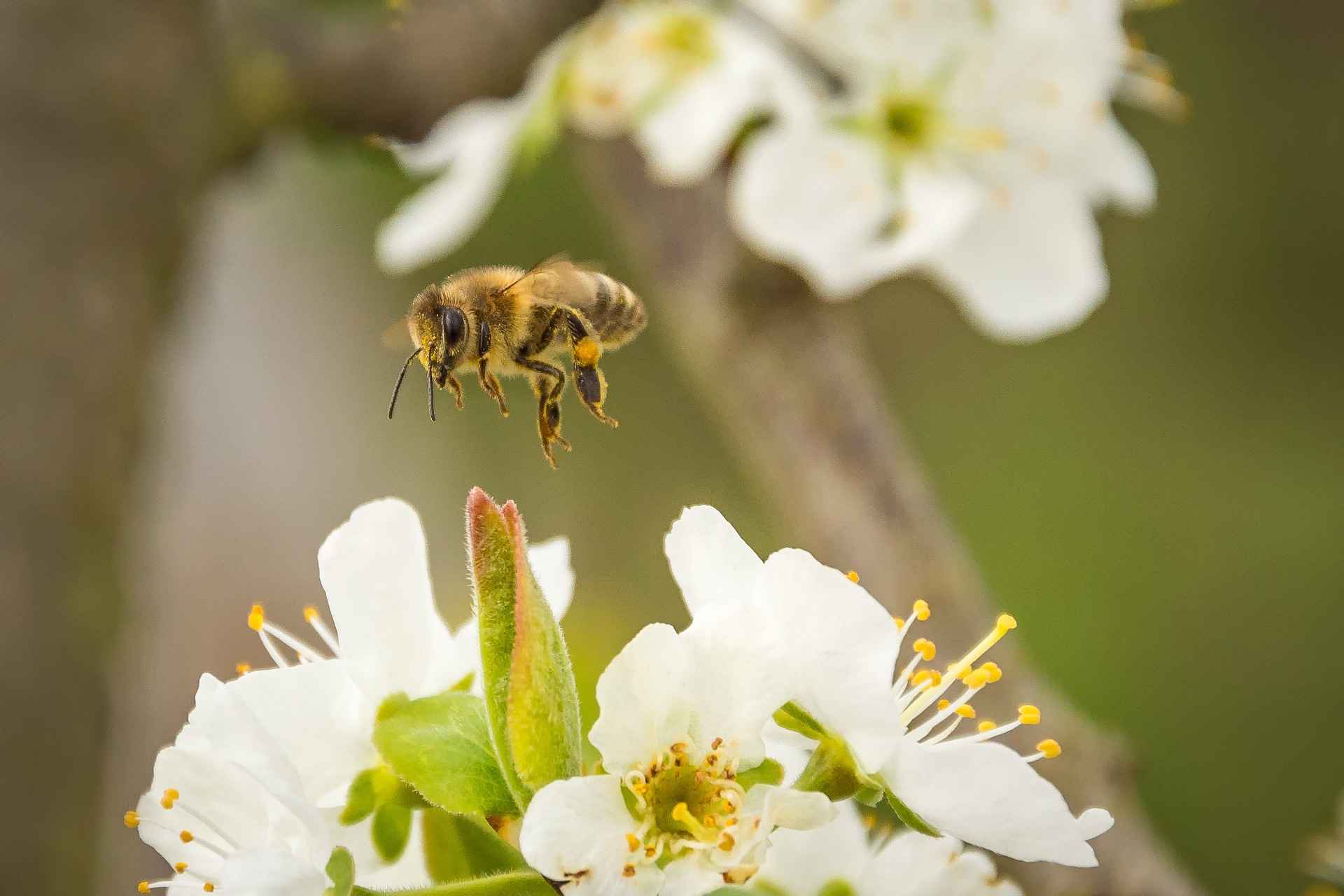
Best melliferous plants by season
to feed pollinators all year round
Contents
Melliferous plants (or flowers) are plants that produce a more or less significant amount of high-quality pollen and nectar. They are an important source of food for foraging insects such as bees, bumblebees, butterflies, etc. The bee requires a very high diversity of agricultural, horticultural, and wild floral species to meet its dietary needs, hence the importance of significant biodiversity. Far from the uniformity of landscapes, monoculture agriculture, and pesticidal substances that are lethal to many beneficial insects, our gardens, cultivated organically, have become over time an essential habitat for their survival.
Insects need to find food all year round! This proves particularly difficult during the winter months. However, be aware that there are various melliferous plants for all seasons, and by incorporating them in numbers into your gardens, you allow foragers to find sustenance even in winter.
“The happiness of a bee is to exist; for Man, it is to know and to marvel at it.” Jean-Yves Cousteau
Flowering in early spring
-
MELLIFEROUS TREES
– Apple Trees (Malus domestica)
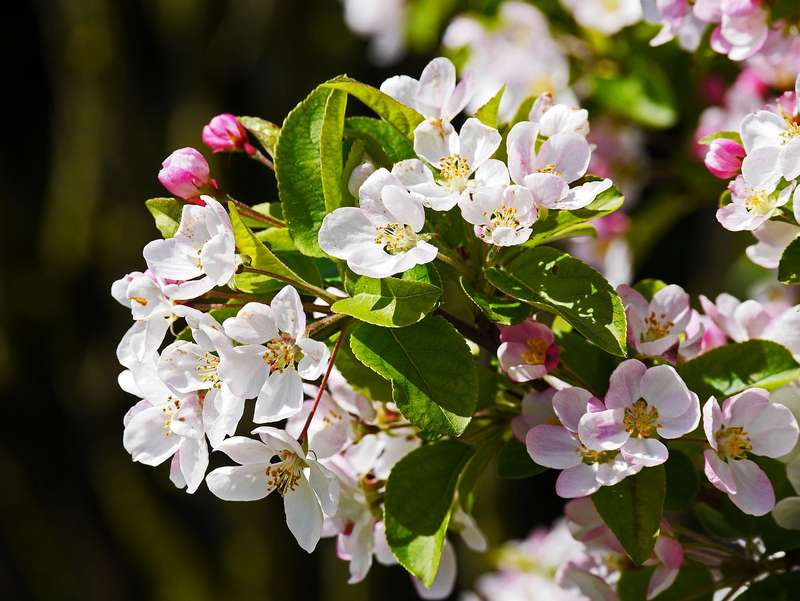
Most apple trees are self-sterile, meaning they require pollinating insects to ensure the fertilization of flowers and produce fruit. When establishing an orchard, it is essential to mix varieties, with some fertilizing others. Apple trees provide high-quality pollen for bees.
– Cherry and Sweet Cherry Trees (Prunus avium)
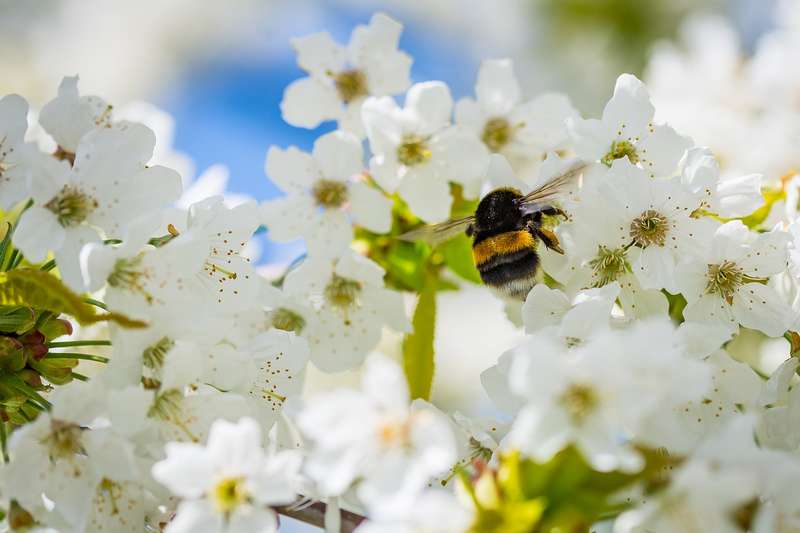
The term cherry tree refers to several species within the genus and includes both fruit-bearing trees and ornamental varieties. The latter, such as Prunus serrulata, are of little interest to pollinators as their flowers are often too double and complicate matters. The most melliferous is the sweet cherry tree (Prunus avium), with several varieties that fertilize each other to ensure good fruiting. It is primarily bees that transport pollen from flower to flower, collecting abundant nectar that leads to one of the first honeys of the year. Almond and apricot trees could also be included among the most melliferous trees.
– Black Tupelo (Nyssa sylvatica)
The black tupelo is a small deciduous tree native to the United States, whose foliage takes on fabulous autumn hues of red and orange. Flowers appear in June and are highly appreciated by bees. It also features remarkable bark and produces berries that birds love.
-
MELLIFEROUS BUSHES AND SHRUBS
– Japanese Quince (Chaenomeles)
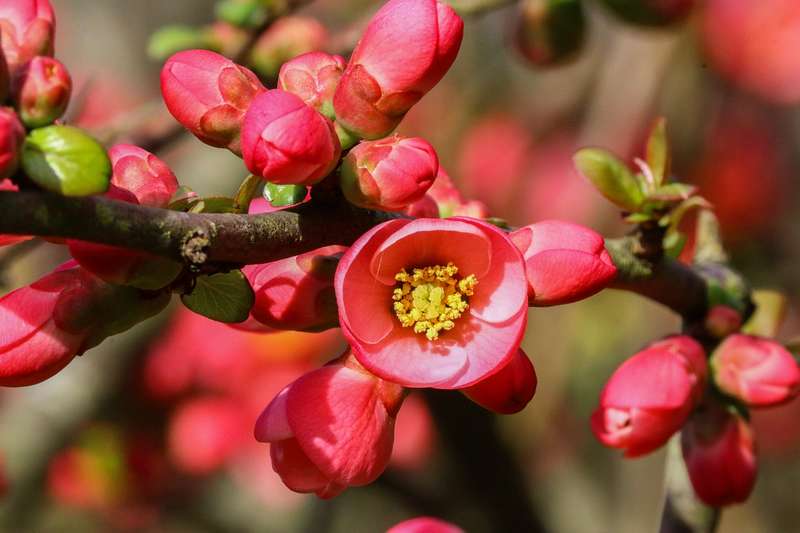
This early-flowering shrub is highly sought after by pollinating insects at a time when there is not much else available for them. A multitude of flowers appear in March-April, before the foliage. It forms a large, colourful bush that can be planted alone, easily integrated into a free hedge, or trained against a wall.
-
MELLIFEROUS PERENNIALS, ANNUALS, AND BULBS
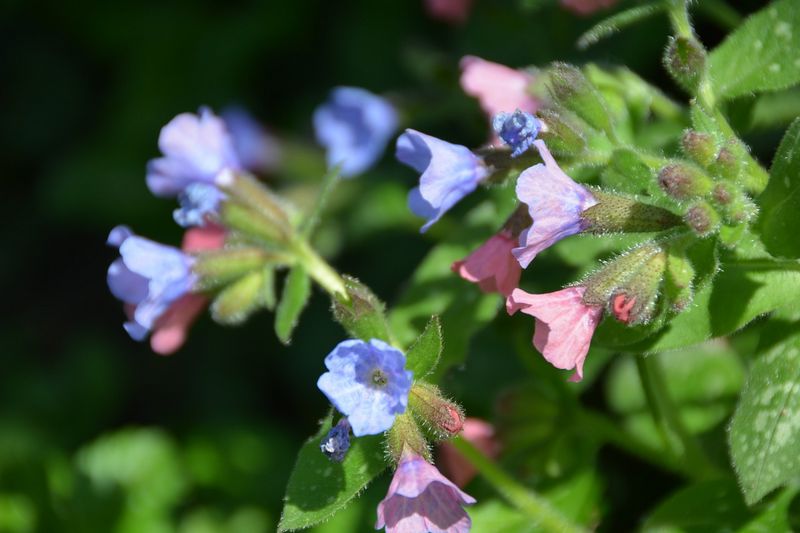
The flowers of lungworts are frequently visited by bumblebees and bees actively seeking sustenance at the end of winter. The colour of the flowers changes with age due to a variation in intracellular pH during aging. Note that it is the purple flowers, the youngest ones, which contain more pollen and nectar, that are primarily foraged. These are easy ground cover plants for shaded areas. Flowering occurs from March to June, depending on the varieties of lungworts.
– Grape Hyacinths (Muscari armeniacum)
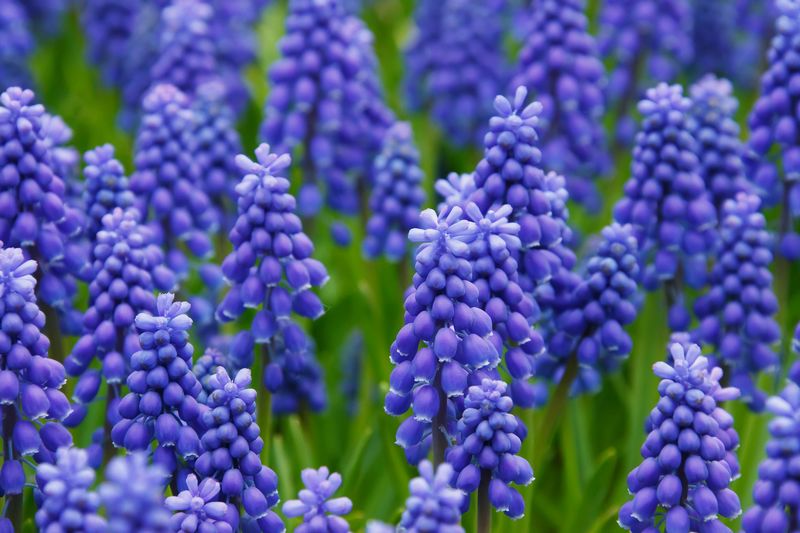
These flowers are very common in gardens where they naturalise perfectly. They attract all sorts of pollinators, particularly bees of the species Apis mellifera, which find the coveted nectar and pollen. Flowering occurs from March to May, depending on the varieties.
Among native plants, it is worth mentioning the famous dandelion (Taraxacum officinale), which, despite its bad reputation, is a highly important melliferous plant, a true reservoir of nectar and quality pollen for hungry foragers.
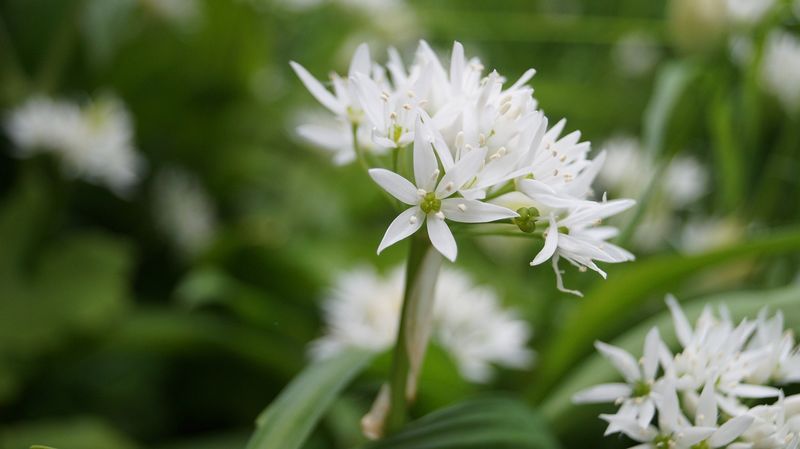
This small woodland bulb produces lovely white umbels that are highly melliferous. Rich in nectar and pollen, wild garlic provides an excellent food source for many pollinating insects. Flowering occurs from April to June. Additionally, it is edible, and the entire plant emits a strong garlic scent, making it useful in cooking.
Flowering in late spring
-
MELLIFEROUS TREES
– Black locust (Robinia pseudoacacia)
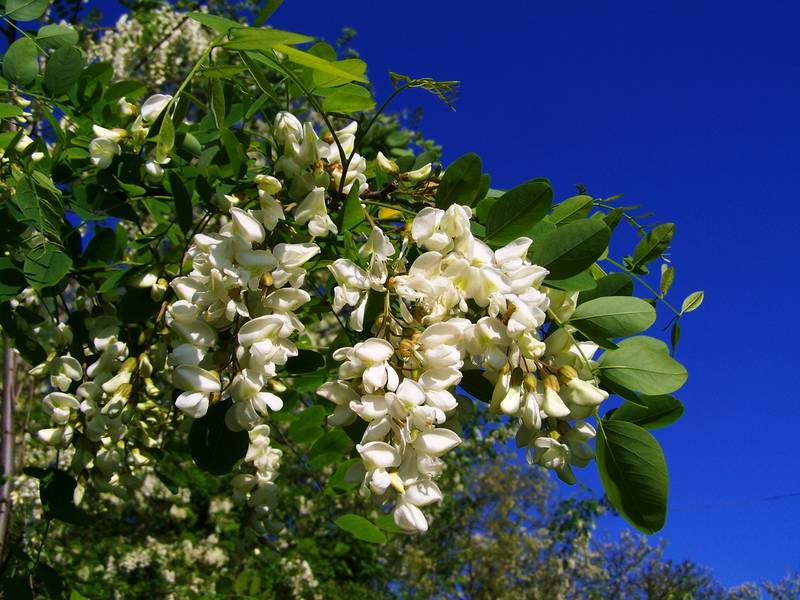
Native to North America, the black locust is a small spring tree, widely naturalised in France, whose fragrant flowers are highly sought after by bees. In fact, some beekeepers harvest the famous acacia honey (which is actually from black locust). Flowering occurs in May-June. Its foliage also changes colour: it goes from yellow to green and finally turns golden in autumn.
– Hawthorn (Crataegus monogyna, laevigata, oxycantha)
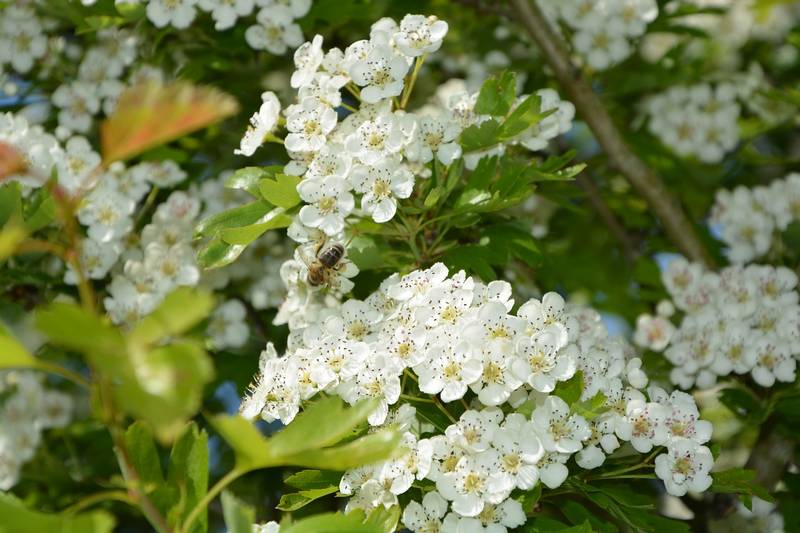
Hawthorns are small trees or large, very thorny shrubs characteristic of hedgerows in bocage landscapes. Flowering occurs in mid-May. Their highly fragrant white flowers are also very melliferous, producing nectar and pollen in abundance.
– Sycamore maple (Acer pseudoplatanus)
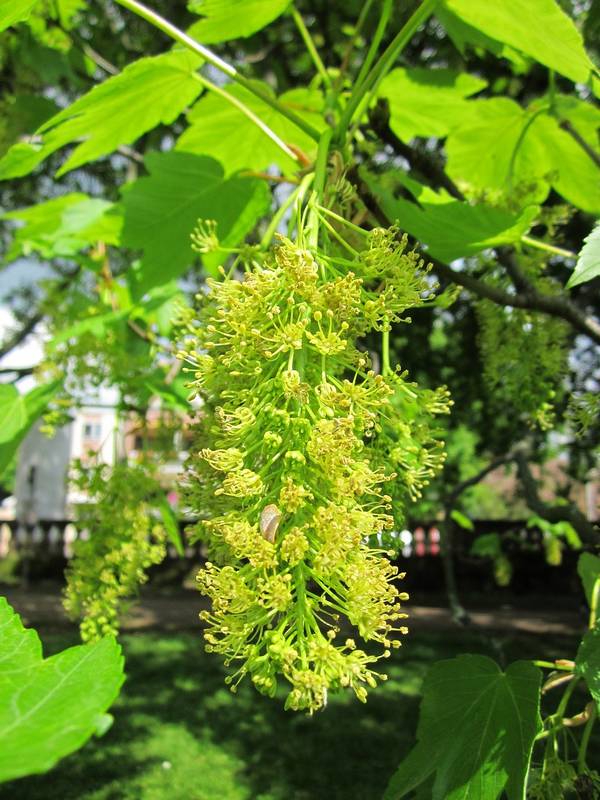
The sycamore maple is a tree that provides high-quality nectar and pollen in April-May thanks to its small yellow flowers, which are frequently visited by foraging insects. The variety ‘Brillantissimum’ has pink foliage in spring, turning green in summer and finally yellow in autumn. A perfect way to combine the useful with the pleasant!
-
MELLIFEROUS SHRUBS AND SMALL SHRUBS
– Rosemary (Rosmarinus officinale)
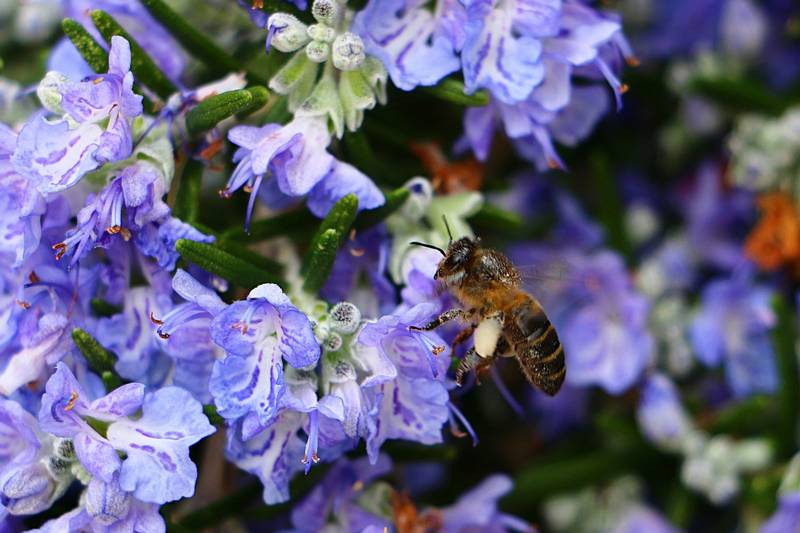
Rosemary is a highly aromatic shrub that grows wild along the Mediterranean coast. It flowers in early spring and sometimes again in autumn following a period of drought. Its flowers, with their lower petal serving as a landing pad, are ideally designed for visits from pollinating insects.
-
MELLIFEROUS PERENNIALS, ANNUALS AND BULBS
– Agastache (Agastache foeniculum)
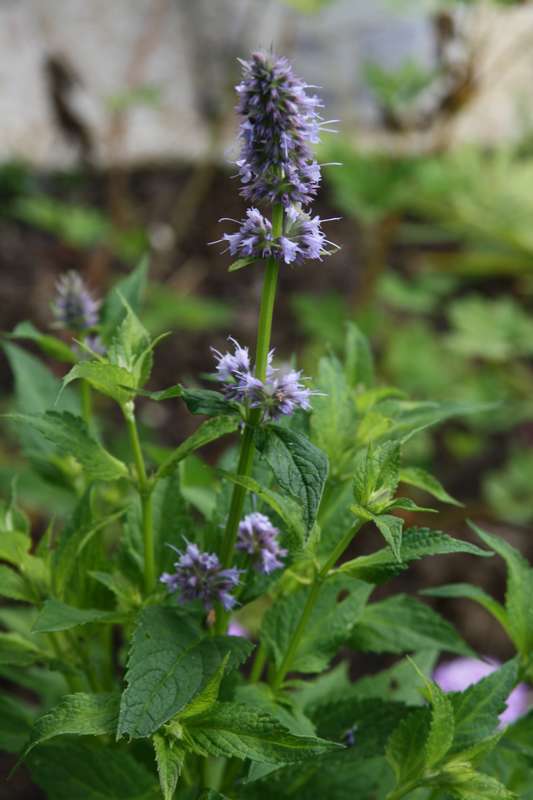
Agastaches are aromatic perennials that thrive in poor, stony soils, producing spike-like flowers that are particularly melliferous. Flowering occurs from June to October, depending on the variety.
– Scabious (Scabiosa columbaria)
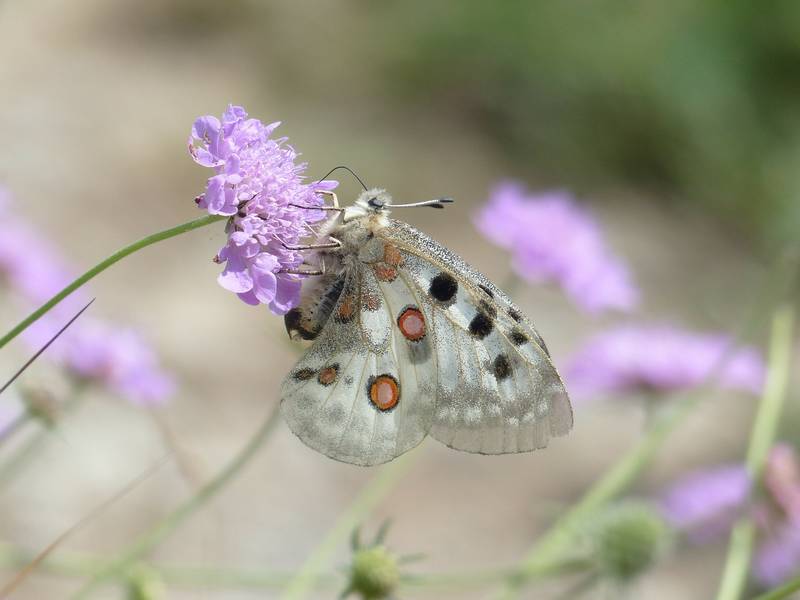
This scabious is a highly melliferous plant actively foraged by bees and butterflies. It flowers for a long time, continuously from June to September. The variety ‘Butterfly Blue’ offers lovely lavender-blue flowers, while those of ‘Pink Mist’ are pink.
– Borage (Borrago officinalis)
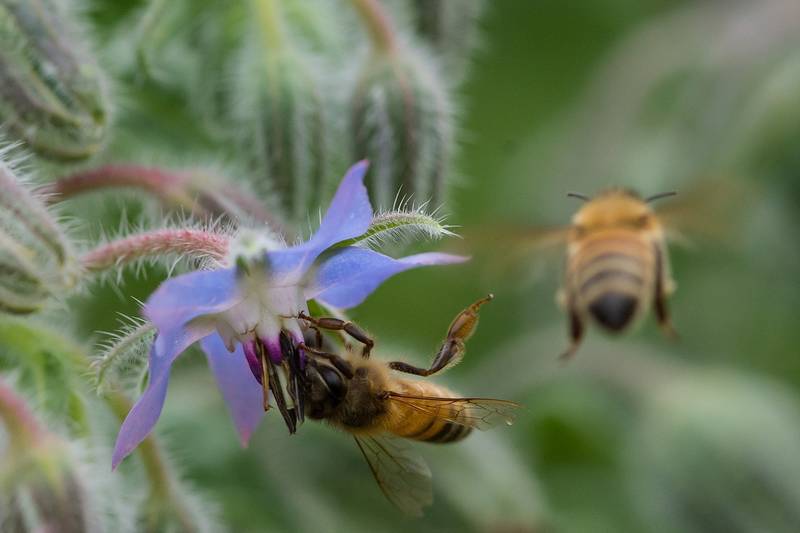
Borage is a highly melliferous annual that exerts an irresistible attraction on bees. The flowers produce a large quantity of nectar. It self-seeds easily, flowers from May-June, and the flowering continues until the frosts.
Flowering in early summer
-
MELLIFEROUS TREES
– Sweet Chestnut (Castanea sativa)
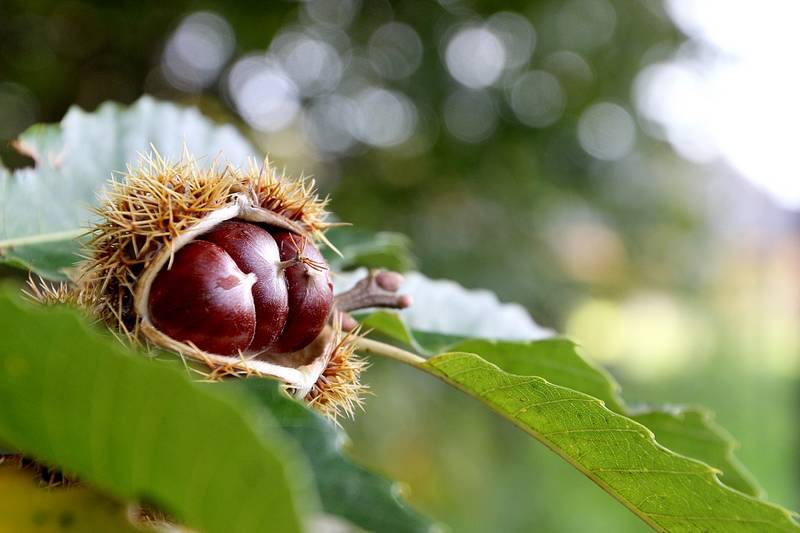
The sweet chestnut is a majestic, long-lived tree that loves light and warmth. Male and female flowers are separated on the same plant. It is primarily pollinated by the wind, yet paradoxically, it produces nectar that is highly sought after by bees.
-
MELLIFEROUS SHRUBS AND SMALL SHRUBS
– Chaste Tree (Vitex agnus-castus)
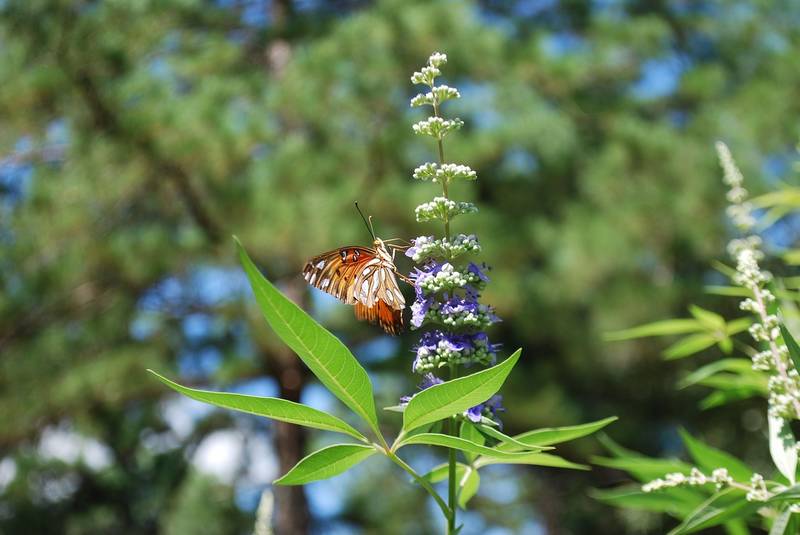
Native to Asia Minor and Southern Europe, the chaste tree is a moderately hardy shrub. From July to October, it produces fragrant lavender-blue flowers, tightly clustered in upright spikes, which are very melliferous. Small purple fruits follow. The variety ‘Albus’ offers pure white inflorescences.
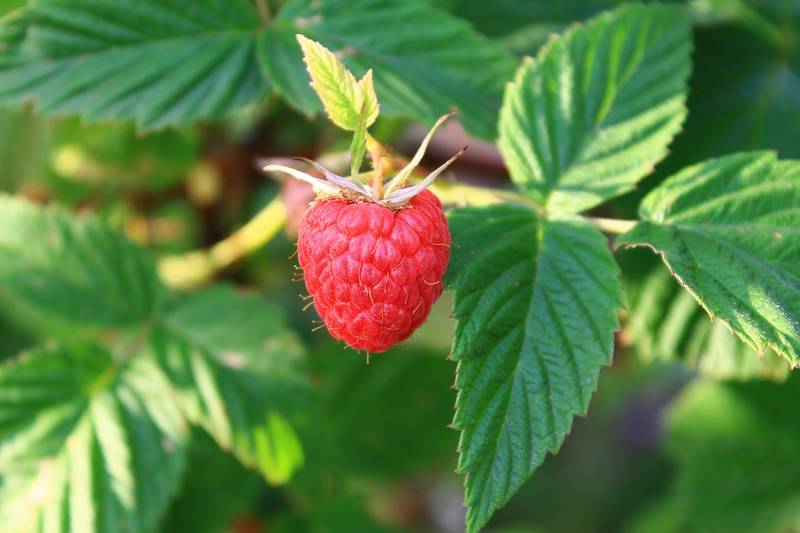
Whether cultivated or wild, the raspberry is a small, highly melliferous shrub. The white flowers require visits from pollinators to turn into raspberries. In our gardens, there are two types of varieties: non-perpetual varieties flower only once in June-July on two-year-old canes. Perpetual varieties flower for the first time in August-September at the tips of this year’s canes and a second time in June of the following year on two-year-old canes.
– Lavenders (Lavandula angustifolia, officinalis)
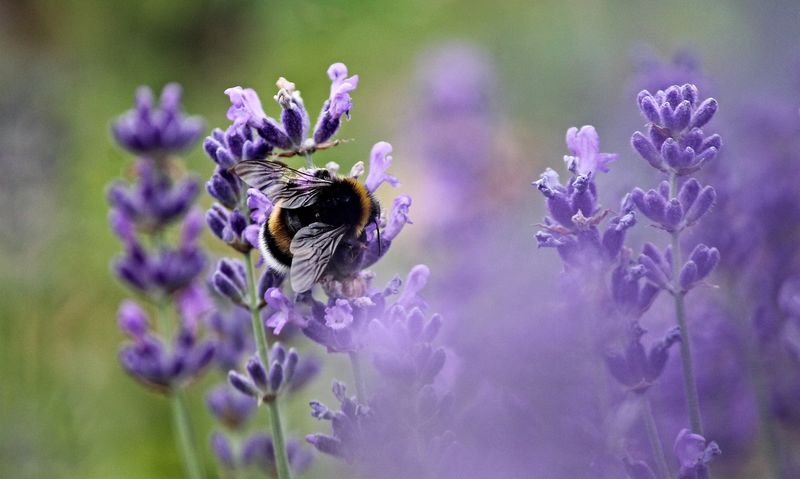
Renowned for their fragrance and aromatic foliage, lavenders are very attractive to many insects, especially bees, which produce a distinctive honey from them. Lavandula angustifolia is the hardiest and flowers early, from late June to late July.
-
MELLIFEROUS PERENNIALS, ANNUALS, AND BULBS
– Mints (Mentha suaveolens)

Like all aromatic Lamiaceae, this mint and its many related species are very melliferous. Pale pink or white flowers appear in July-August and are highly sought after for their delicious nectar. The plant emits a characteristic scent depending on the variety. Mint is also known for repelling unwanted insects like aphids and can, of course, be used in cooking.
– Marjoram (Origanum vulgare)
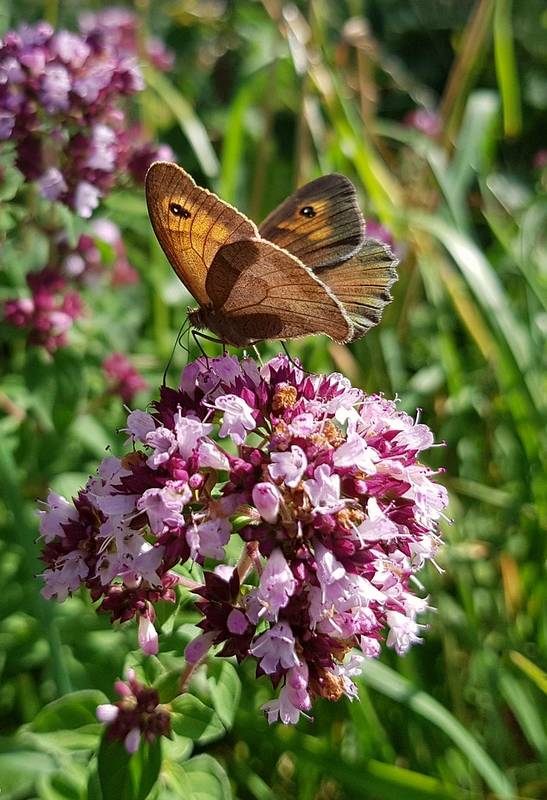
Wild marjoram (or oregano) is a melliferous perennial particularly interesting for the vegetable garden. Its pinkish-white flowers are highly appreciated by foraging insects for their sweet nectar. The variety ‘Aureum’ has beautiful golden foliage that is very decorative in spring, turning chartreuse later.
– Valerians (Valeriana officinalis, Centranthus ruber)
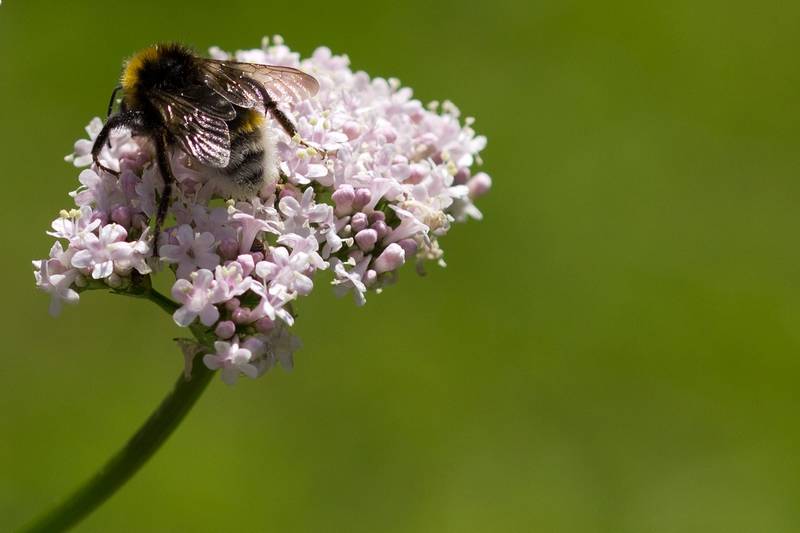
Valerians are excellent perennials, particularly floriferous. Foraging insects, including many butterflies, gather delicious nectar from the heart of the flowers. Flowering occurs from May to June and continues until September, depending on the species and varieties.
– Thistles (Cirsium)
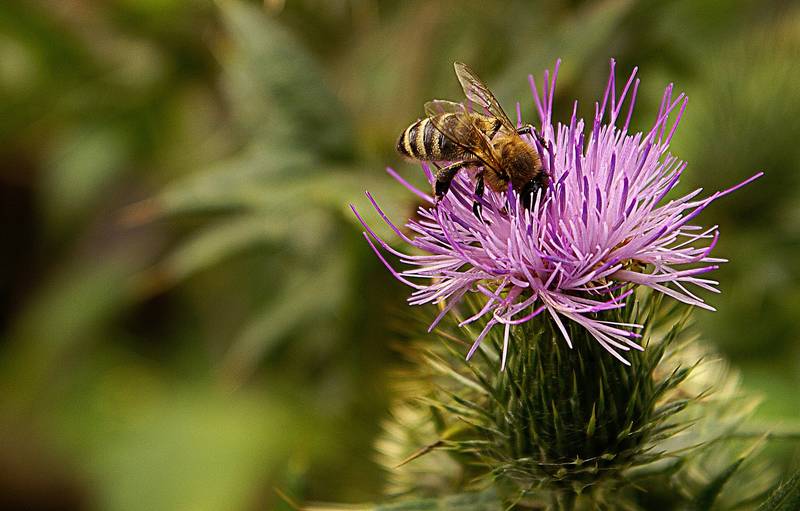
All species and varieties of thistles are very melliferous and provide good quality nectar to bees. The variety C. rivulare ‘Atropurpureum’ is particularly beautiful! Thistles bloom from June to August.
– Sunflower (Helianthus annuus)
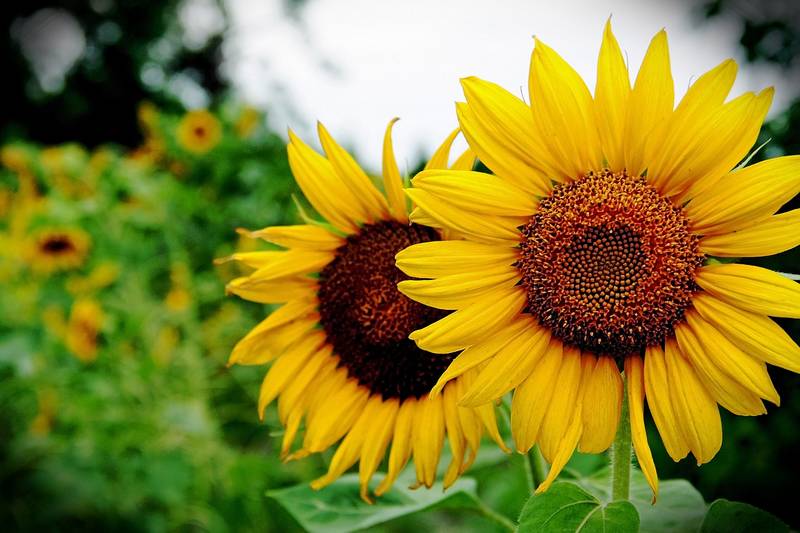
This annual with large yellow flowers is visited by many pollinating insects, attracted by the delicious nectar they contain. They also attract birds that love the seeds. Sunflowers bloom from July to October and offer a beautiful palette of colours.
– Buenos Aires Vervain (Verbena bonariensis)
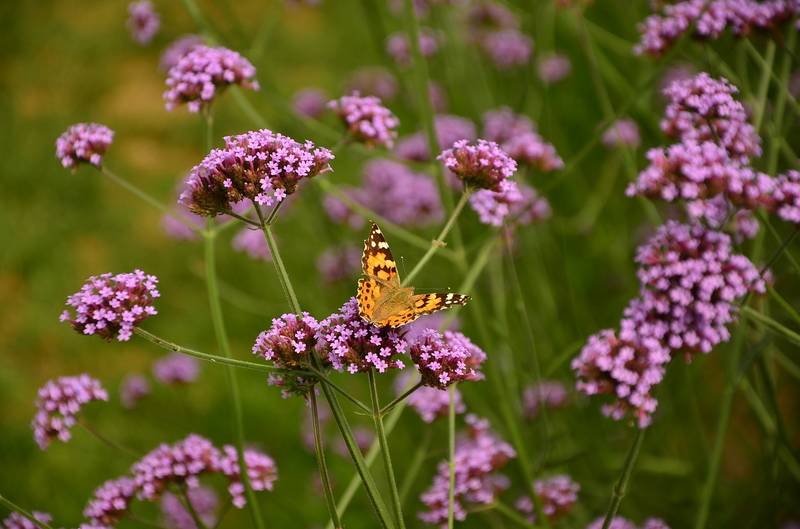
This lovely perennial is short-lived and not very hardy but self-seeds well if it is happy. Its numerous mauve inflorescences attract foragers. Flowering occurs from June to October.
Flowering at the end of summer
-
MELLIFEROUS TREES
– Japanese Sophora (Styphnolobium japonicum, formerly Sophora japonica)
This tree is an exotic essence native to Asia, often planted in urban areas as it tolerates the urban atmosphere very well. It is highly melliferous and actively visited by bees during its summer flowering in cream-white panicles, sometimes pinkish. However, arm yourself with patience, as it takes no less than twenty years to reach its ripeness and thus to obtain its first flowering. The variety ‘Pendula’ has long, flexible branches that trail down to the ground. Its twisted framework remains interesting after the leaves have fallen.
– Honey Tree (Tetradium danielii)
This little-known Chinese tree is nicknamed the honey tree due to its generous, highly melliferous flowering that attracts a large number of bees. The white flowers are fragrant from July to August, and even into September depending on the climate. After pollination, the flowers give way to small red fruits that are highly appreciated by birds in late autumn.
– Limes (Tilia henryana, platyphyllos)
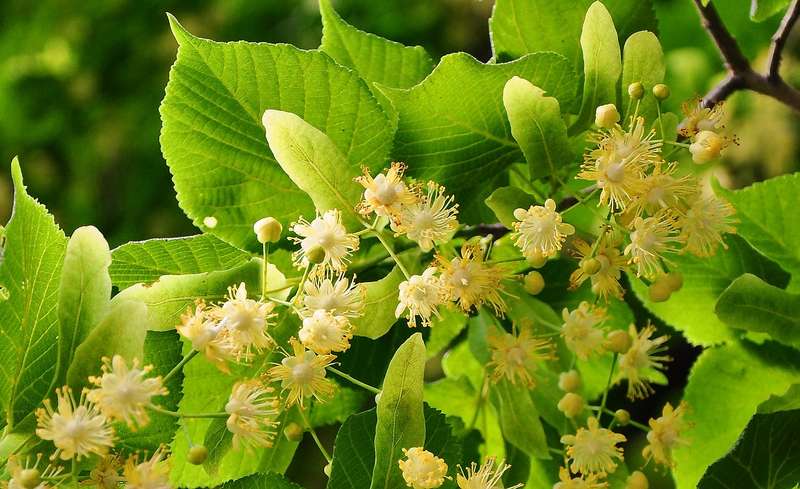
Like chestnut trees, limes are majestic and long-lived trees. The flowers emit a powerful, enchanting fragrance that attracts insects. During the flowering period, which lasts from early June to early July, the limes are buzzing with activity.
-
MELLIFEROUS BUSHES AND SHRUBS
The Caryopteris are small shrubs highly valued for their flowering in shades of blue-violet at the end of the season, from August to October. These flowers are particularly melliferous and nectariferous, attracting many bees and butterflies.
-
MELLIFEROUS PERENNIALS, ANNUALS, AND BULBS
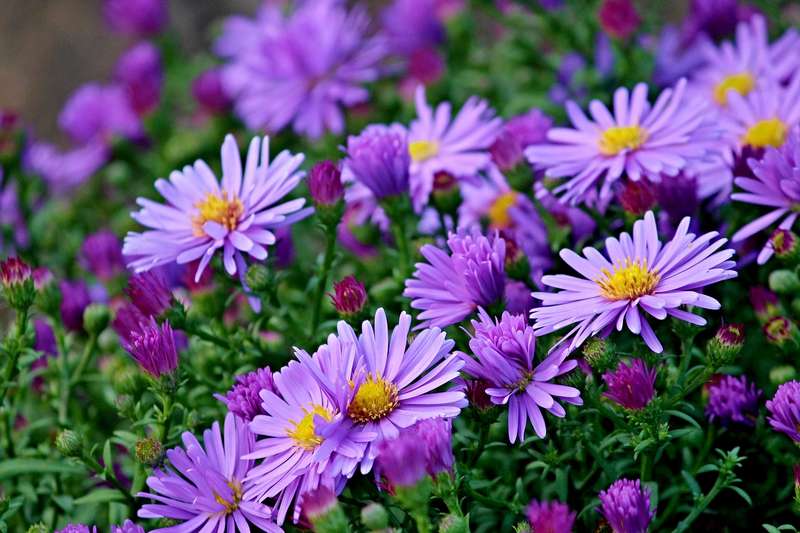
All asters are highly melliferous plants, widely visited by bees that gather generous amounts of nectar but especially pollen. Depending on the varieties, flowers appear as early as July, but most asters bloom in late summer to early autumn.
– Autumn Heleniums (Helenium autumnale)
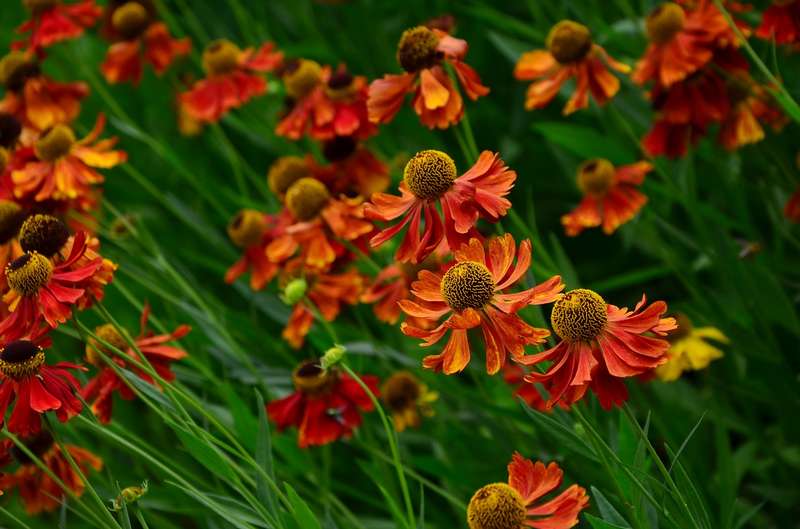
Foragers love to land on the yellow-powdered centres of Autumn Heleniums. The flowering occurs from July to October depending on the varieties. These are easy-to-cultivate plants that should be more widespread in gardens.
– Stonecrops (Sedum spectabile)
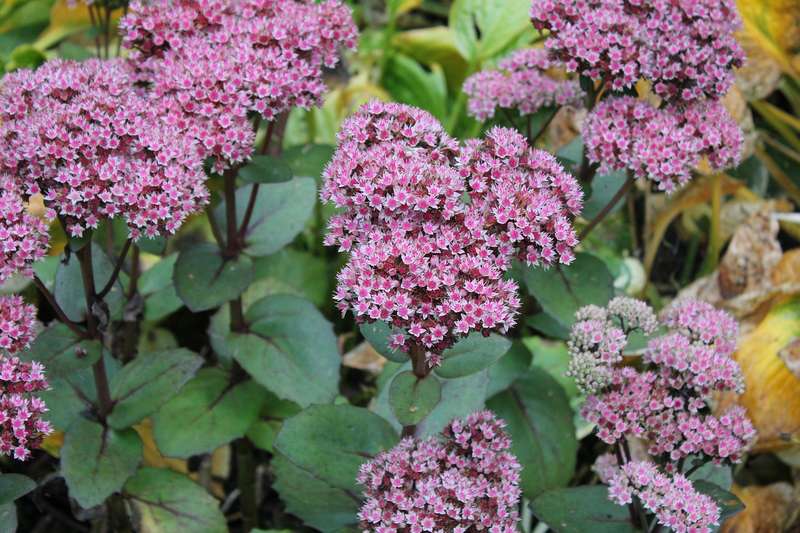
Stonecrops are highly melliferous perennial plants that attract bees as soon as their flowers are in bud. They primarily gather nectar from them. Butterflies flock in large numbers to their false umbels of small star-shaped flowers that bloom in autumn.
Flowering in early autumn
-
MELLIFEROUS TREES
– Strawberry Tree (Arbutus unedo)
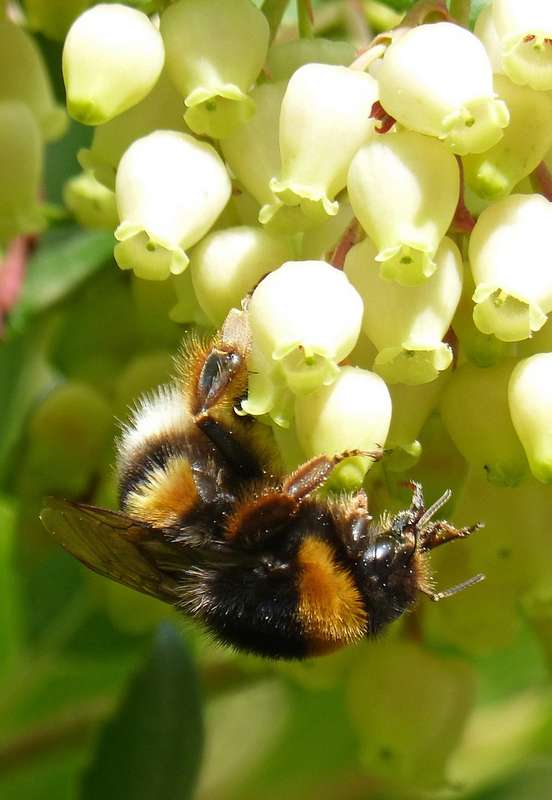
The strawberry tree is a small evergreen tree with a highly melliferous autumn flowering. Indeed, it is in October-November that clusters of white or pink flowers appear, accompanied by the small edible red fruits from the previous year.
-
MELLIFEROUS BUSHES AND SHRUBS
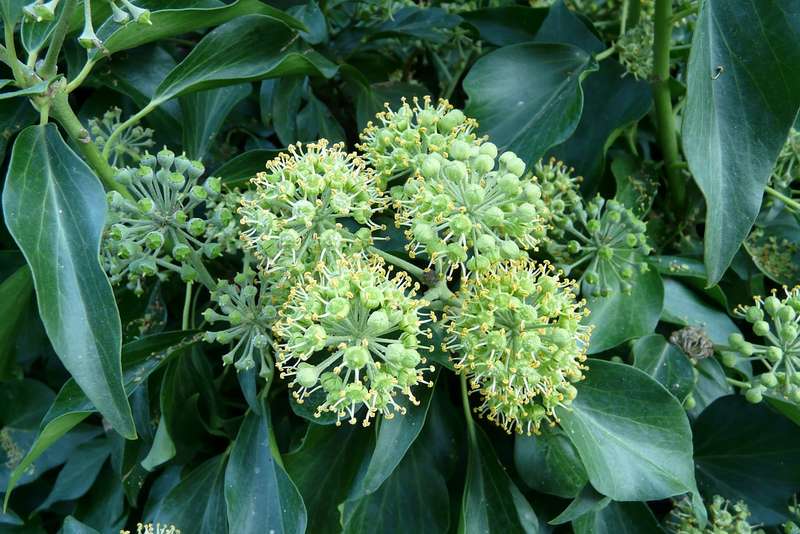
Ivy is a providential plant for bees. It flowers in autumn and fruits at the end of winter. It produces pollen and abundant nectar that is highly sought after by bees. In September-October, flowering ivies are buzzing with activity. Meanwhile, birds feast on the small black fruits during the winter food shortage. Its evergreen foliage also serves as a refuge for many animals.
Flowering in late autumn
-
MELLIFEROUS TREES
– Japanese Medlar (Eriobotrya japonica)
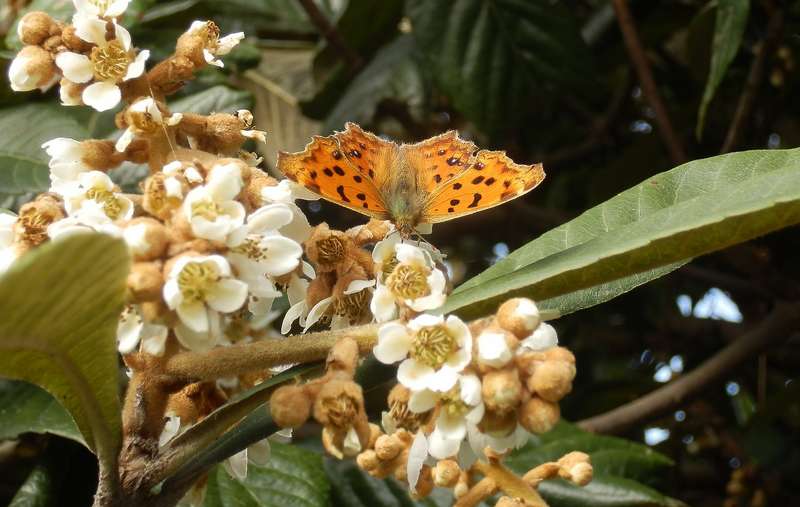
This small tree with an exotic appearance produces medlar fruits, which are small, juicy, and edible orange fruits. The tree is moderately hardy and can be planted as far north as the Paris region, but the late fruiting (November-December) is often destroyed by frost. In contrast, the flowers appear in October-November, and their sweet and fragrant scent with notes of bitter almond irresistibly attracts bees. Its cousin, the Mespilus germanica, is also melliferous and better suited to the north of the Loire, but its flowering occurs in spring.
-
MELLIFEROUS SHRUBS AND SHRUBS
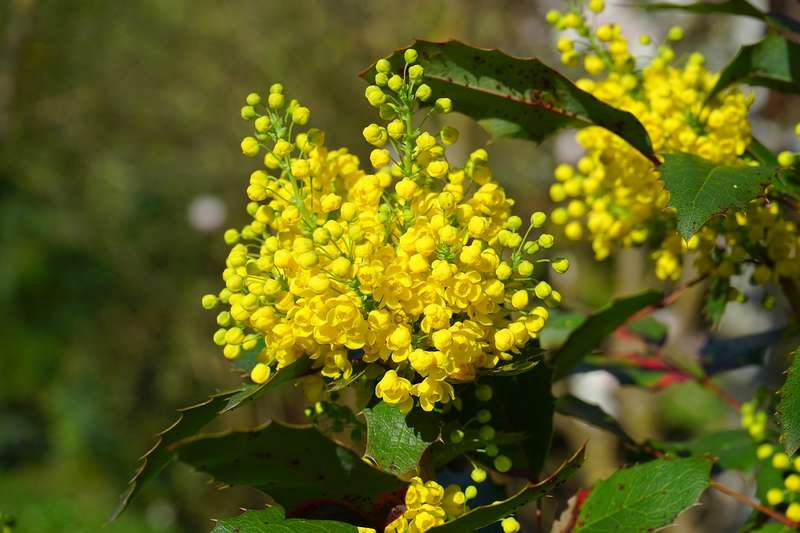
These are evergreen shrubs with tough leaves. To attract pollinators that are rather discreet in winter, they have opted for the strategy of showy and fragrant flowers.
-
MELLIFEROUS PERENNIALS, ANNUALS AND BULBS
– Large-flowered Chrysanthemums (Chrysanthemum x grandiflorum)
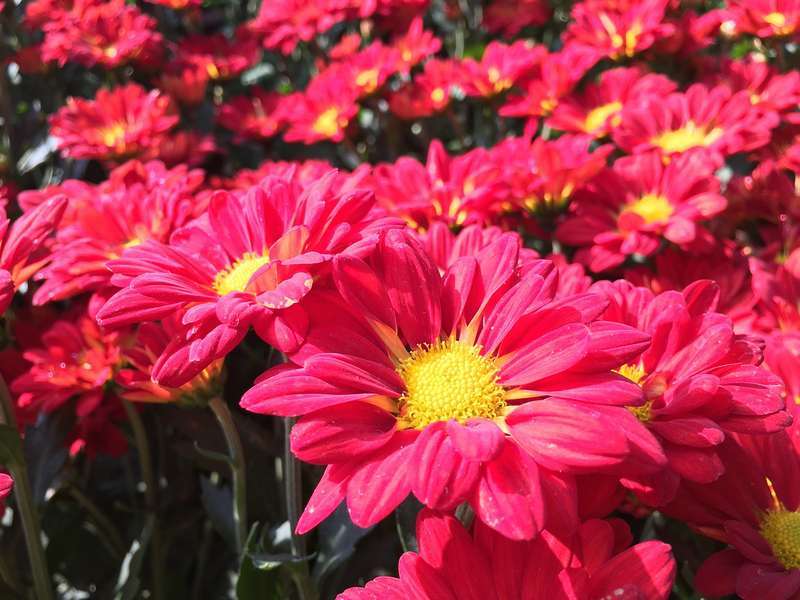
For bees, the most interesting are the cultivars with simple flowers that provide abundant pollen and nectar. At this late time of year, many insects, including hoverflies and solitary bees, visit the chrysanthemums.
Flowering in early winter
-
SHRUBS AND MELLIFEROUS SHRUBS
– Common hazel (Corylus avellana)
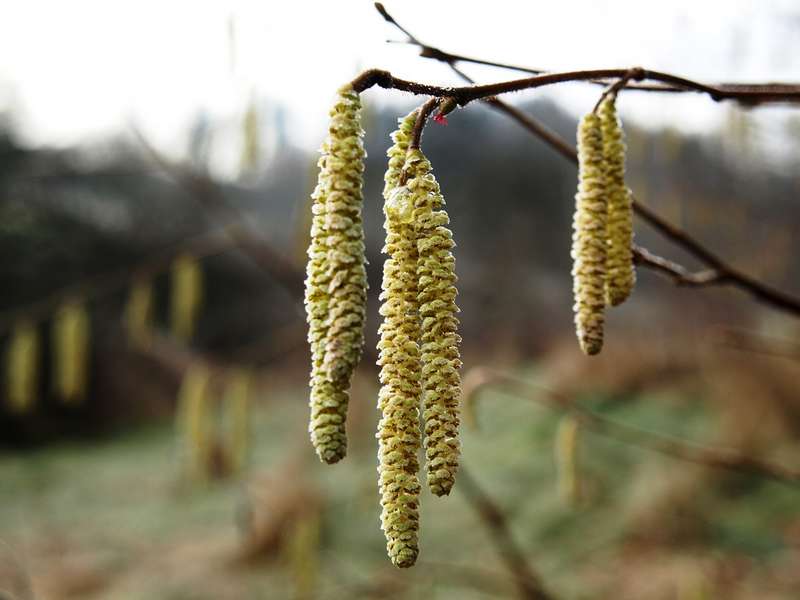
The privilege of opening the ball of melliferous plants goes to the hazel! It is pollinated by the wind, and its pollen should normally not concern insects. However, pollen resources are scarce, and its pollen, although of mediocre quality, is actively sought after by insects that hibernate in their adult form. It is only the long, pendulous male aments that interest the bees. Flowering occurs in February-March.
– Winter honeysuckle (Lonicera fragrantissima)
This bush honeysuckle is very floriferous, and its cream-white flowers with the characteristic honeysuckle scent are very rich in nectar. It blooms in the heart of winter, from January to March.
– Winter heathers (Erica carnea)
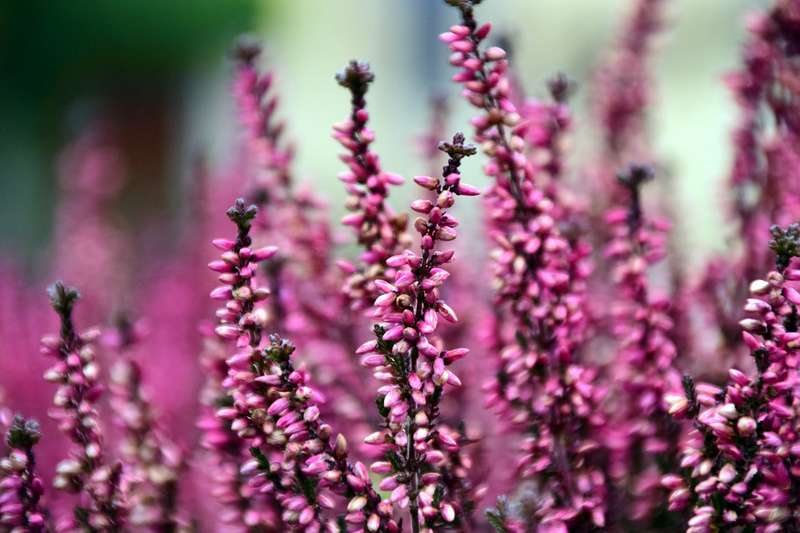
Their graceful bells provide nectar and pollen to honey bees during their occasional outings in the hibernation period as soon as outdoor temperatures reach around 12°C.
-
PERENNIALS, ANNUALS AND MELLIFEROUS BULBS
– Violets (Viola odorata)
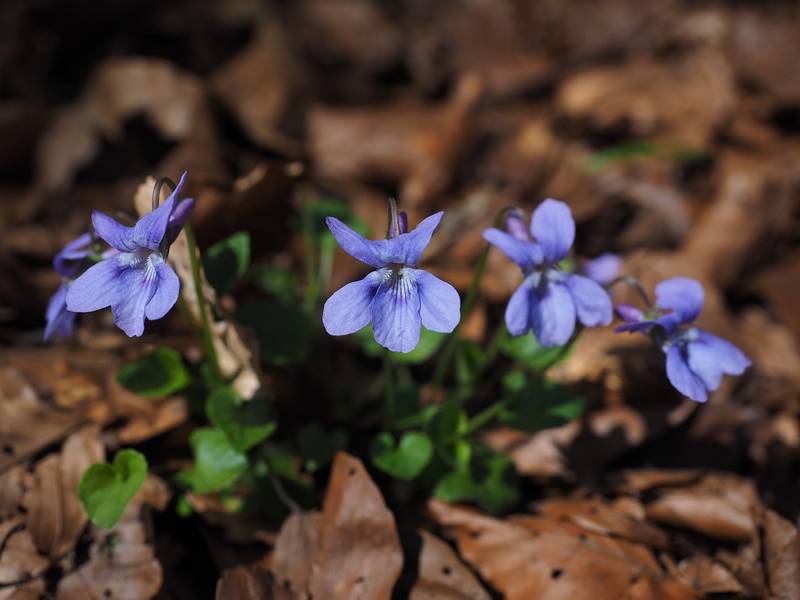
This species blooms very early in well-sunny and well-exposed places. Its sweet scent attracts bumblebees and honey bees that access the sources of nectar and pollen with a few acrobatic contortions.
– Snowdrop (Galanthus nivalis)
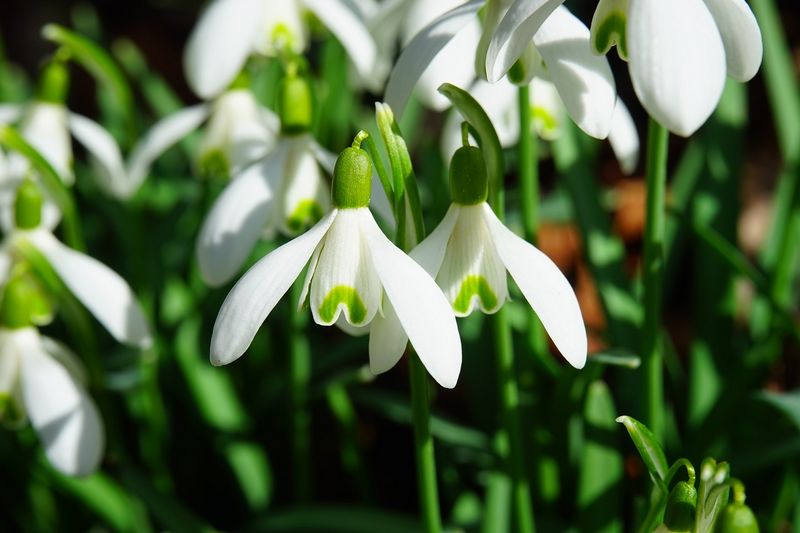
Attracted by the graceful green lips of the petals and by a pleasant scent, bees forage on these early flowers where they find nectar but especially abundant pollen. The flowering period roughly coincides with that of the hazels, between January and March.
– Tammasini crocus (Crocus tommasini)
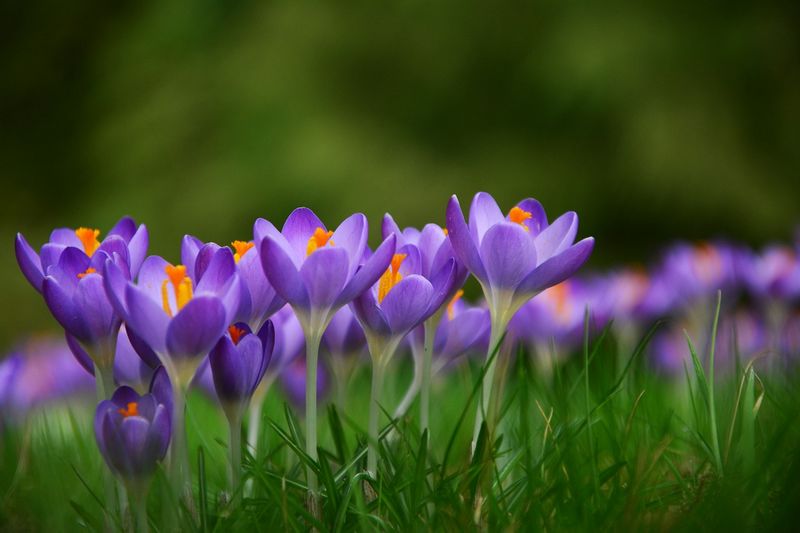
This crocus is one of the earliest. It blooms in February-March and delights the bees. Some dipterans like hoverflies also visit the crocuses in search of pollen.
Flowering at the end of winter
-
MELLIFEROUS TREES
– Goat willow (Salix caprea)
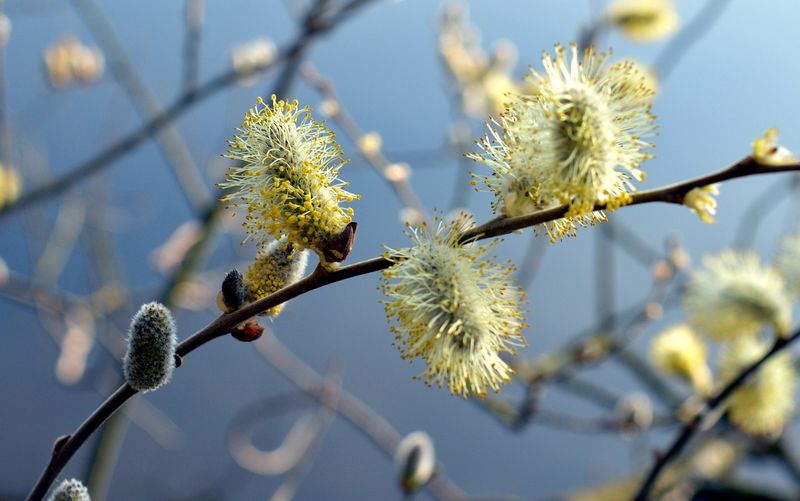
This small tree is indeed one of the most common, but it is one of the best sources of nectar and pollen, which it provides abundantly. The aments appear well before the leaves, in February-March.
-
MELLIFEROUS BUSHES AND SHRUBS
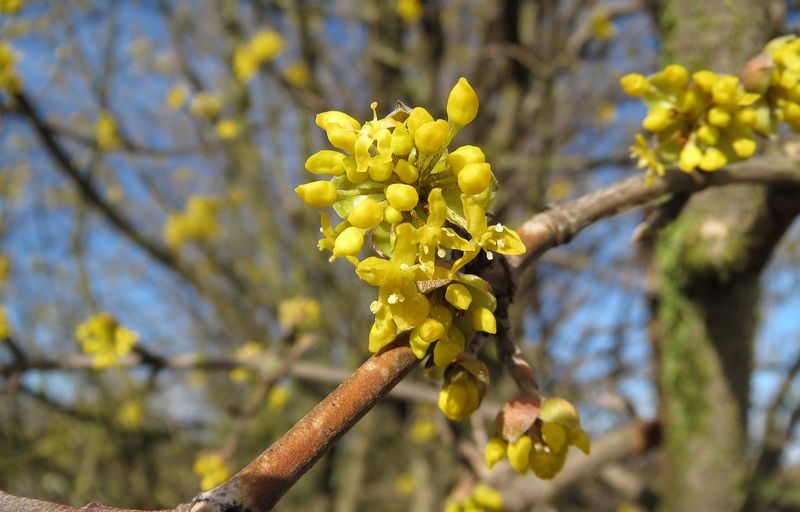
Its yellow flowering appears in February-March, on naked branches. Its winter flowering helps to feed the first foragers, and its fruits are highly appreciated by birds. This dogwood is renowned for its pollen contribution.
-
MELLIFEROUS PERENNIALS, ANNUALS AND BULBS
– Hellebores (Helleborus spp.)
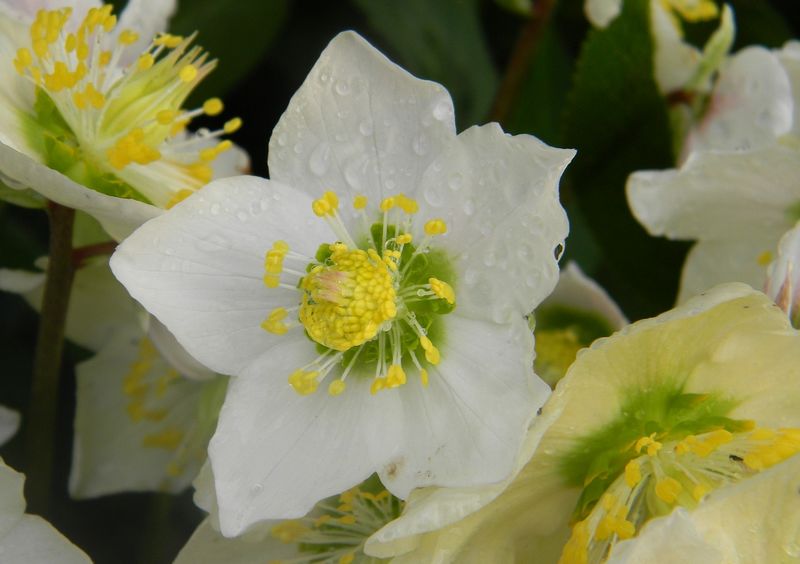
Hellebores provide nutritional support at a time when flowers are scarce, making them valuable in more ways than one. Their long flowering period is an additional asset.
To go further
- Discover our selection of 8 most melliferous climbing plants
- Subscribe!
- Contents
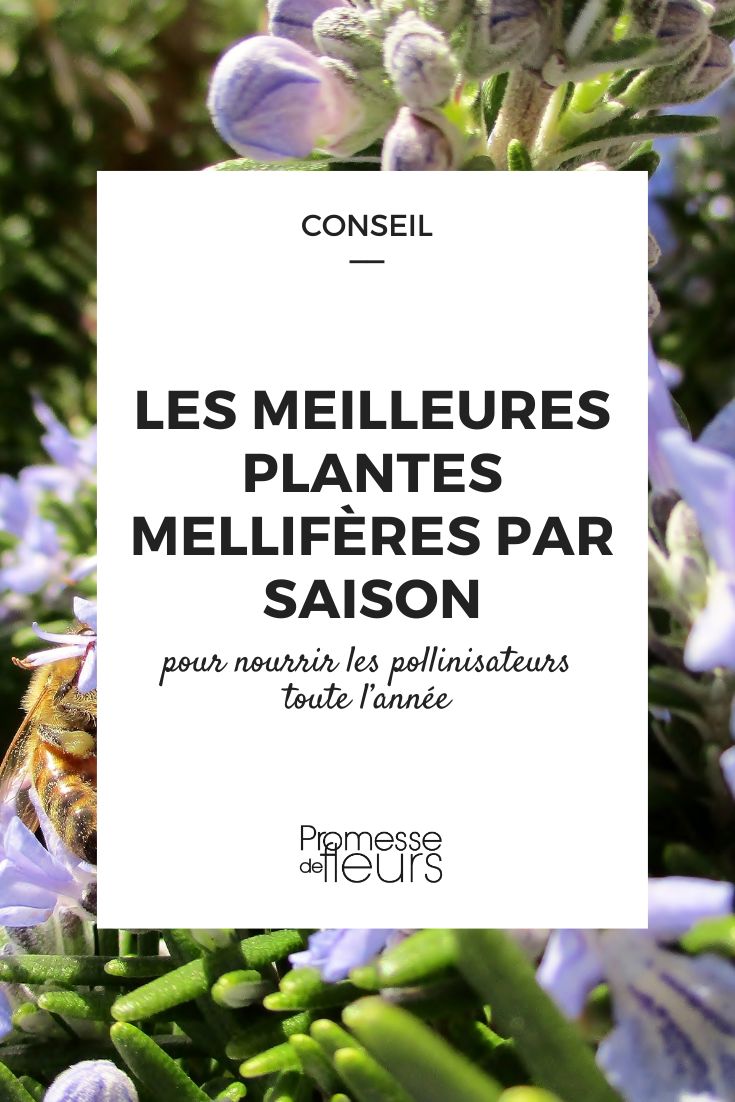































Comments